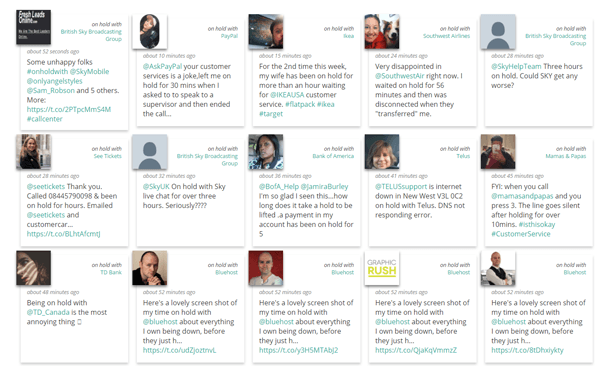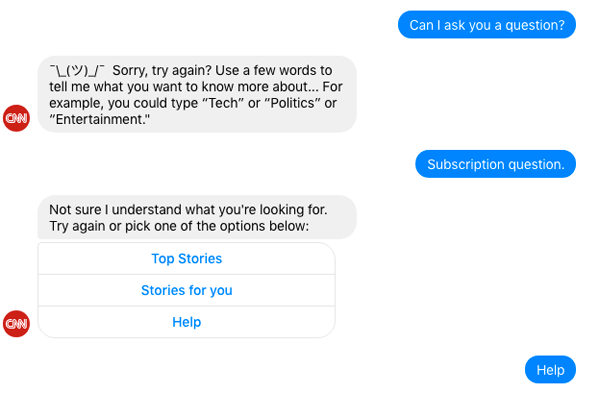Choice & Context in Digital Customer Service

Looking back, you may still have opinions about your overall experience - response time, access to information, helpfulness. It is those opinions that will affect the likelihood of buying from the business again and/or sharing the story with peers. For the most part, however, the basics of customer service have not changed.
Like Paul Vaillancourt, SVP of customer success at BigCommerce told us, "People want great answers but under the terms and conditions they choose."
The process of getting those answers is not isolated to a phone call or an email these days, of course, with consumers/subscribers/users/buyers (whatever they are called in your organization) accessing myriad channels to reach a company anytime and anywhere they choose and demanding to be "remembered" wherever they go.
Customer service is now at the intersection of choice and context: (1) the choice to reach a brand on-demand and (2) the expectation those interactions will take into account the context of the channel as well as the person's attributes, behavior and history.
It's a tall order for brands but through self-, proactive-, peer- and real-time service, companies are making it happen to the tune of greater retention and enviable reputations.
In this month's feature of Website Magazine we will explore the customer service decisions fellow Web professionals are making and the technology used to carry out those decisions to completion.
REAL-TIME SERVICE
Smartphone users can request a private car in seconds (Lyft), get the quickest route to their destinations (Waze) and invest automatically (Stash), yet they are often required to sit on hold when calling large, well-funded brands. When an on-demand generation is placed on hold, what do they do? They vent on Twitter. When doing so, they embarrass the company and tie up two service channels (call lines and social media).
Social
Just how pervasive is this problem? OnHoldWith.com curates Tweets of customers complaining about hold times - publishing the tweets, calling out the brands and even tallying total complaints for that business. The site is powered by Fonolo, a company that offers call-back technology (and is transparent about its motives for hosting the site). Some of the companies included have disputed the wait times that Fonolo reports in its "worst offenders" report, yet perception is everything and tweets are rarely debatable without making the situation worse on a public forum.
Complaints of this nature can be mitigated, of course, with various call center optimization practices, as well as offering other lines of service.
"Customers often turn to social with their customer service issues because they believe a Tweet will be faster than calling a company and waiting on hold," said Andrew Caravella, VP of strategy and brand engagement at Sprout Social. "Since customers have this perception of speed and convenience on social, it's crucial that brands fulfill that expectation."
Despite a Convince & Convert study indicating that 32 percent of customers, who have reached out to brands on social, expect a response within 30 minutes, Caravella says that the majority of brands are failing to meet these expectations. According to the Sprout Social Index, only 12 percent of messages to brands requiring a response actually receive one. When brands do respond, it takes an average of 11 hours, so timeliness is a factor, as well.
"Managing a high volume of inbound messages can be tough, but brands that put an emphasis on social engagement and responsiveness reap the rewards in terms of customer loyalty in the long term," said Caravella.
There are plenty of examples of companies managing their social inbox to great effect (read, "In Tweets: 10 Best Practices for Customer Service on Twitter" at wsm.co/tweetcs).
One of Sprout Social's customers, Tito's Handmade Vodka, turns to the Sprout Smart Inbox for managing its inbound messages and making sure they all get a reply.
In four months of using the Smart Inbox, Tito's saw a 12.6 percent rise in followers and a 37.1 percent increase in engagement according to Sprout Social.
Twitter is not the only social network customers are turning to for service, of course. Facebook is becoming quite a leader in this regard, innovating faster than anyone in this space (see Stat Watch on page 9 of this issue).
Bots
One area of innovation is the use of "bots" within Facebook Messenger. While Facebook boasts that bots only take 10 minutes to develop (read, "Developing Your Own Bot"), brands need to be hyper-aware of all possible use-cases. For example, if a company allows the ability to schedule an appointment via an automated system within Facebook Messenger, it will likely want to call or text to confirm.
A person may not have the same personal responsibility to cancel or reschedule since they never talked to a "real" person. If the company was to start experiencing too many no-shows from this system, the loss of revenue (reserving a spot for someone who did not show) may have to outweigh user convenience (of them being able to book an appointment themselves).
There are many cases where employees need to support bots. If a company develops a simple "subscribe" bot where people are able to sign up to receive content delivery, subscribers will likely also expect to easily make the switch from bot service to human service (see image).

Jen Kern, CMO of Tracx believes top-performing online retailers differentiate themselves in many ways, from fast delivery to easy returns, but one way they provide a hassle-free customer experience is providing live support from a real person throughout the customer journey. Kern says, "While we are all digital, people still crave human-to-human contact."
For this reason, Caravella of Sprout Social believes that bots should be used to handle repetitive tasks (i.e., responding to frequently asked questions) with an automated "hand-off" to a human agent for a more nuanced resolution and better customer service. These reasons also speak to why BigCommerce is not doing much in customer service automation.
"Automation works when you are doing the same thing over and over and over again," said Vaillancourt. "When things are very unique, it doesn't work very well. Our 55,000-plus stores are all snowflakes. It's better for us to build the experience they need."
Plus, when it comes to social media in general for BigCommerce, the e-commerce platform does not get many incoming messages although the networks are monitored consistently and messages are channeled to the right internal contacts.
Live Chat
Where BigCommerce service requests are very active is within live chat - its second biggest "live" contact channel behind voice (60 percent voice, 30 percent chat). The live chat option is not only available to website visitors but also merchants within the product.
It will not be enough to just provide live chat in the near future, but it must also take into account the context of the interaction. The greeting that the live chat operator (bot or otherwise) uses, for instance, can annoy end-users if they are greeted as a first-time visitor (when they are not), are greeted with a promotion (when they want to track an order), etc.
"Right now, when you open a chat box, you have to tell us who you are," said Vaillancourt. "By the end of the year, we'll know exactly who you are [to the betterment of in-product support]. Anyone who isn't doing what we're doing right now in this industry is going to fall way behind."
PROACTIVE-SERVICE
Every customer is different and every approach to the service choices they make will need to be adjusted based on context. To a certain degree, retail is setting this expectation with its push toward personalization (where content and products are presented based on known attributes and history) and omnichannel (where all touchpoints work together and share data to ensure each channel flows into the next for superior customer experience).
Thinking several steps ahead of them can help consumers enjoy this custom experience - an experience that does not give them a reason to pick up the phone or fire off a negative Tweet. Proactively thinking about what is next for a customer is the definitive merger of customer experience and customer service.
"The customer experience is tightly correlated to the level of customer service that buyers receive throughout their customer journey," said Kern of Tracx. "If at any point a buyer (or prospect) is not happy with the service they are receiving (e.g., if purchasing an online meal delivery service, and it does not arrive on the correct day or with the right meal, and the company fails to rectify the issue to the buyer's satisfaction), they now have many channels - with social media being the dominant one (including review sites as part of social) - to tell the world what a horrible experience they have had."
In order to circumvent this public shaming, proactive service is required and that is delivered through experience. For example, brands can set up a rule within a live chat offering that sends a promotional code to a person whose code just failed when checking out or initializing a chat when a person has stayed on an information page for a time that has been previously determined as "too long."
Knowing all this, Web professionals may be surprised to know that these expectations are not isolated to just consumers (of the retail variety). PROS, for example, released a new study conducted by Forrester on the challenges businesses face in today's digital era when it comes to meeting B2B sales and buyer expectations. A big takeaway from the study is that B2C buying preferences - personalization, reviews, live chat, proactive service, self-service - are now fully entrenched in the B2B world.
"B2B buyers want to be fully in control of their buying experience, preferring to gather information on their own instead interacting with a salesperson," said Craig Zawada, chief visionary officer at PROS, a cloud commerce company. "They also expect a transparent, personalized and omnichannel experience - similar to when buying a shirt online - whether they're working with a direct salesperson, a partner channel, or self-serving via a website or mobile."
Ticketing and Texts
Not to be outdone, there are several other traditional and emerging customer service channels to explore. For more, visit wsm.co/textstix.SELF-SERVICE
There are some products and services that will require more after-the-sale support than others. Price alone is not always the best indicator of support levels either. Much of the support for BigCommerce merchants, for example, is customized based on who the customer is. If, for example, a large retailer is not getting the traffic to their site that they expect, they can reach out to their personal account manager to bring in an SEO expert. Smaller retailers have the same questions but at a different scale, and they may be directed toward BigCommerce's community, which houses robust discussion groups.
It has little to do with the price they are paying, says Vaillancourt, but more about BigCommerce being smart enough to know the different conversations its unique customer base may need to have. And, in many cases, it is not a conversation customers want to have at all - opting for self-service options instead.
Communities
BigCommerce recently turned on a single sign-on feature that allows its customers to go into the communities section from the products area with one click. There was a 500 percent week over week increase in sign-ons when that feature was "turned on." Now, it is one click into the communities and one click back according to the company.
Once in the communities, merchants have access to their peers including their competitors (who are surprisingly quite transparent about struggles and successes within these groups) to gather unique insights that will help them help themselves. Interestingly, only 1 in 4 that go into the community looking for answers go into the tech support section after.
It is data like this that can help BigCommerce, and others should take note, create narratives to understand what customers are looking for "in order to update assets to make the right information available contextually and sooner."
Contextual Choice
Customers' expectations for the experiences they are provided, the channels available to discuss those experiences and how companies customize messaging based on what they already know are ever-growing. The good news is that brands large and small can win - and win big - by knowing where customers are, allowing them to get access to customer service there, and provide a service that caters to who they are and what they want at that moment.








